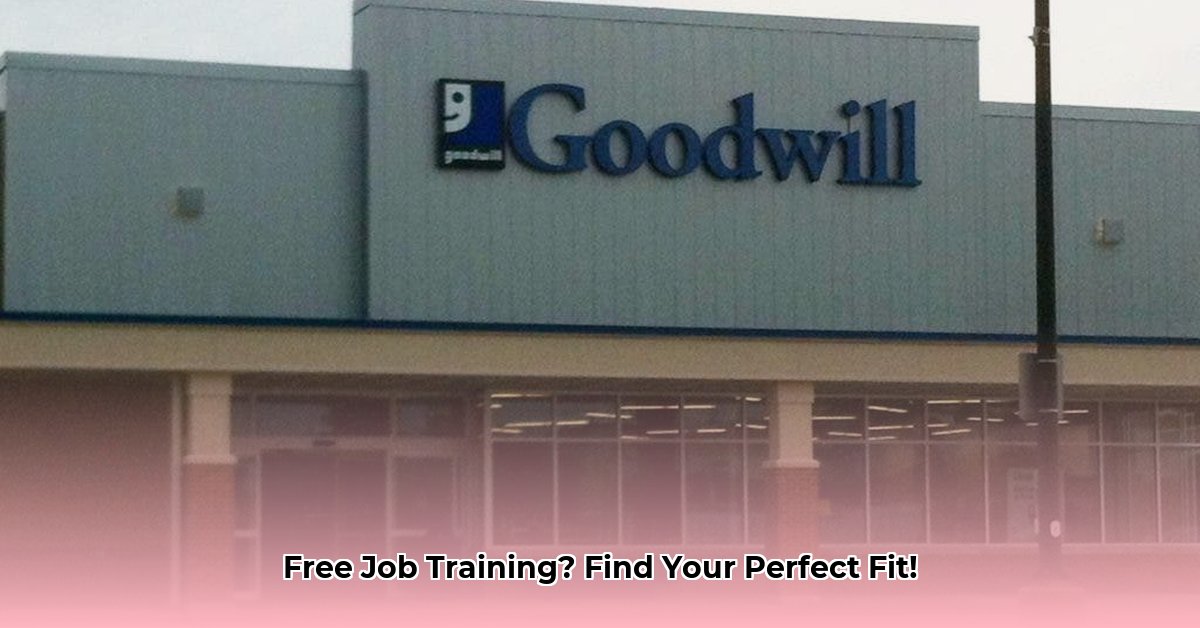
Goodwill Store Lombard: Your Path to Employment and Community Growth
Imagine a place where gently used treasures lead to brand-new opportunities. That's Goodwill Store Lombard – more than just a thrift store, it's a community hub offering free job training and support to help you achieve your career goals. It's not just about finding a job; it's about finding the right job, empowering you to build a brighter future for yourself and the Lombard community. Are you ready to unlock your potential?
Let's say you're facing challenges in your job search. Maybe your resume needs some polish, or you're feeling unsure about how to ace that interview. Goodwill Lombard understands. They offer comprehensive training, helping you hone your skills, discover your strengths, and present your best self to potential employers. They act as a bridge, connecting you with local businesses and opportunities you might otherwise miss. It's an investment in your future, a chance to build your confidence and unlock your potential. Think about the feeling of accomplishment, the newfound independence—Goodwill helps make that a reality. How many individuals have transformed their lives through Goodwill’s free training program? The answer lies in countless success stories.
But Goodwill’s impact extends far beyond individual achievements. It’s a vital part of the Lombard community, contributing in numerous ways. By accepting gently used clothing and household goods, Goodwill keeps tons of waste out of landfills, giving items a new lease on life and benefiting the environment. This environmentally conscious approach directly contributes to sustainability efforts, reducing our collective carbon footprint. Furthermore, the revenue generated from sales directly funds their job training programs, creating a positive, self-sustaining cycle of community support. The more people donate, the more people Goodwill can help find employment. This is a powerful example of community empowerment.
Goodwill's influence subtly strengthens the local economy. By helping individuals find work, they contribute to a stronger, more vibrant economic environment for everyone in Lombard. Helping one person find a job ultimately helps the entire community. It’s a ripple effect of positive change, and it’s why supporting Goodwill is an investment in the future of Lombard. Isn't that a compelling reason to get involved?
Instead of focusing solely on statistics, let's highlight the human element. Consider Sarah (name changed for privacy), a single mother who, through Goodwill's program, gained essential skills, boosted her confidence, and secured a stable job, allowing her to provide for her family. Her story, while just one example, symbolizes the transformative power of community support and the life-changing effect of Goodwill's work. Countless similar stories underscore the tangible impact of Goodwill's commitment to the community.
Ready to join the Goodwill movement? Here’s how you can contribute:
- Donate: Your gently used items directly support job training programs. Every donation helps someone find their next opportunity.
- Volunteer: Share your skills and time by assisting with sorting donations, training workshops, or administrative tasks. Your contribution is invaluable.
- Seek Training: Take advantage of free job training, including resume writing workshops, interview preparation, and career counseling.
- Spread the Word: Tell your friends and neighbors about Goodwill's positive impact. Sharing your experience encourages others to get involved.
Goodwill Store Lombard is more than just a store; it's a beacon of hope, a place where community support fuels individual growth, creating a brighter future for everyone in Lombard. It’s a powerful testament to the interconnectedness of community and individual well-being. Let’s work together to strengthen our community. How can we collectively amplify this impact in the future?
How Goodwill Measures Program Effectiveness
Goodwill Lombard’s free job training program is invaluable, but how do we measure its effectiveness? It’s not solely about numbers; it’s about understanding the program’s impact on individuals and the community.
Defining Success
Before looking at metrics, we need to clarify the program's objectives. What skills are taught? What employment are participants seeking? Are there specific demographic goals? Defining these goals provides a framework for evaluating success. Are we aiming for overall employment rate increases, or focusing on specific high-demand sectors? This distinction is crucial.
Individual Success Metrics
We assess individual impact by tracking placement rates (percentage of graduates securing employment), salary increases, job satisfaction levels, job retention rates, and employee feedback from employers. This holistic view provides a more accurate picture of the program's effectiveness.
Community Impact Assessment
The program’s effect extends beyond individuals, affecting the community. We evaluate this through metrics like reduced unemployment rates, increased economic growth due to graduate contributions, and improved social integration of participants.
Data Collection: The Power of Qualitative and Quantitative Data
A mixed-methods approach is crucial. Quantitative data (placement rates) provides an overview, while qualitative data (testimonials, employer feedback) offers valuable context. These narratives offer a deeper understanding of the program’s true impact. This combined approach helps ascertain the program’s success in its entirety.
Continuous Improvement: A Cycle of Evaluation and Enhancement
Evaluation is an ongoing process. Regular assessments and feedback allow for program refinement, ensuring it remains relevant and impactful. Adjusting the curriculum based on feedback and data analysis keeps it aligned with evolving workplace needs.
In essence, measurement is about learning, adapting, and continually improving the program to better serve the community.